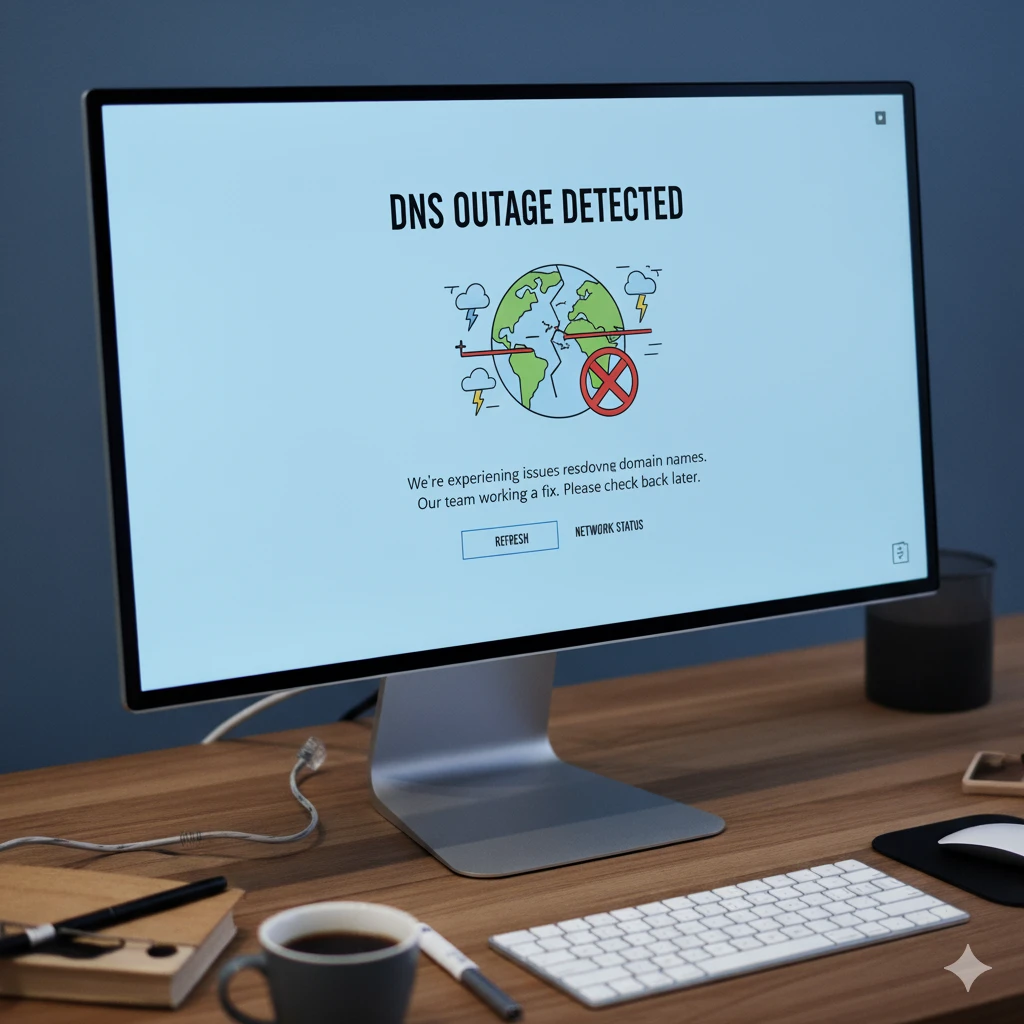Compared to its “Magnificent Seven” big tech and data center hyperscaler peers, Amazon (AMZN) has been a lame company in 2025. The stock has barely budged with just a couple months left in the year.
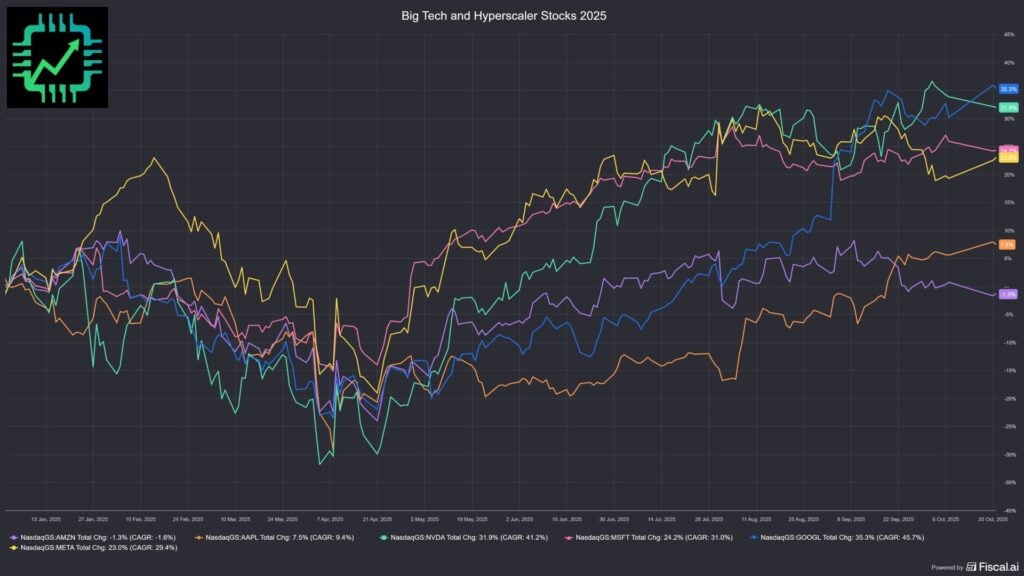
See Amazon there at the bottom of the barrel among the hyperscalers in 2025? Make charts, financial visuals, and conduct in-depth research using Fiscal.ai, and get 15% off any paid plan using our link! Fiscal.ai/csi/
Which is why perhaps, with Amazon in an ongoing period of cost-cutting to raise profit margins, investors forgave a very large internet outage caused by a malfunction in a fundamental tool at AWS (Amazon Web Services). That’s meaningful, given that AWS is the main breadwinner for Amazon shareholders. What just happened? Is this going to be a problem for Amazon investors? And what alternatives exist?
DNS, “it’s always DNS”
First, a couple of key tech terms:
- DNS = domain name system, “the internet’s phone book.” https://www.cloudflare.com/learning/dns/what-is-dns/
- Amazon DynamoDB = “serverless” database tool used in building apps on AWS, including managing an app’s DNS. https://docs.aws.amazon.com/amazondynamodb/latest/developerguide/Introduction.html https://aws.amazon.com/startups/learn/building-a-serverless-dynamic-dns-system-with-aws#overview
- Serverless = the data center servers are there, but the software developer doesn’t have to deal with them; just write and manage the code, AWS (or whoever else) will do the rest. https://www.redhat.com/en/topics/cloud-native-apps/what-is-serverless
- Amazon EC2 = Elastic Cloud Compute, the rental service for serverless apps; can be rented in custom configurations depending on app need of CPUs and GPUs (the logic), memory (short-term) and storage (long-term), and network capacity (the data highway). https://docs.aws.amazon.com/AWSEC2/latest/UserGuide/concepts.html

For the better part of the day on Monday, October 20, 2025, hundreds of popular apps and websites were down for the count. Amazon claimed responsibility: “…we determined that the event was the result of DNS resolution issues for the regional DynamoDB service endpoints…” https://www.aboutamazon.com/news/aws/aws-service-disruptions-outage-update
Basically, the address for a lot of apps got lost, likely due to a technical update at AWS. “New phone, who ‘dis?”

And this had a cascade effect. As the AWS infrastructure engineers tried to sort out the DNS issues, they scaled back EC2 “instances,” the servers that run the cloud apps. By the end of the day, with the address books fixed, the servers came back online. Just in time for your after-work Netflix (NFLX) binge (much of Netflix runs on AWS, sorry your TV binge couldn’t happen during work hours).
Amazon was a pioneer of the cloud infrastructure concept (rent out spare data center compute resources), and as such, AWS remains the biggest cloud infrastructure provider in the world. Trailing-12-month revenue of AWS was $116 billion and counting as of Q2 2025. AWS acts very much like a type of utility company that helps operate the internet, and specifically thousands of internet-based applications around the world. When a part of that basic infrastructure goes down, the apps and services built atop go down too.
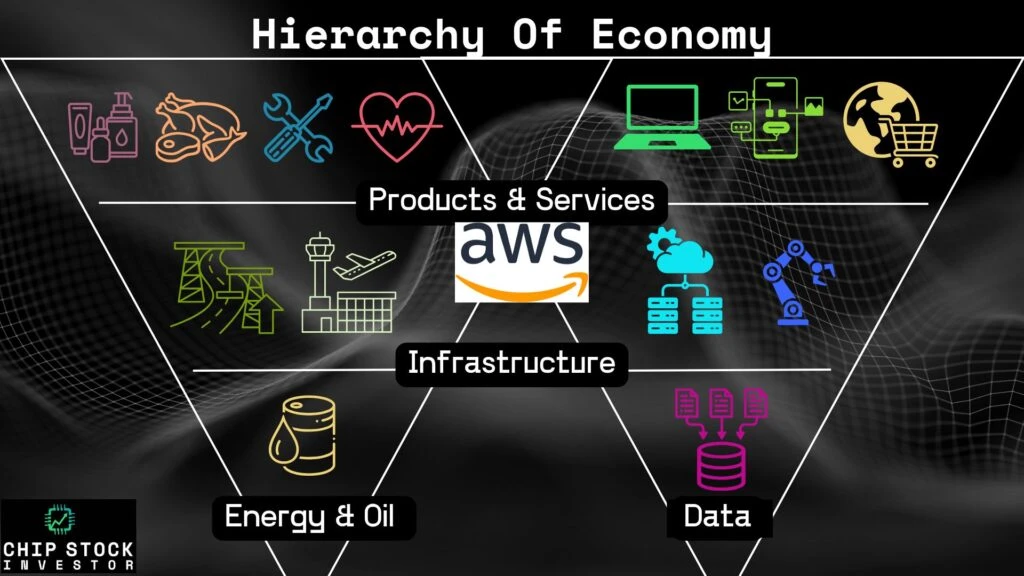
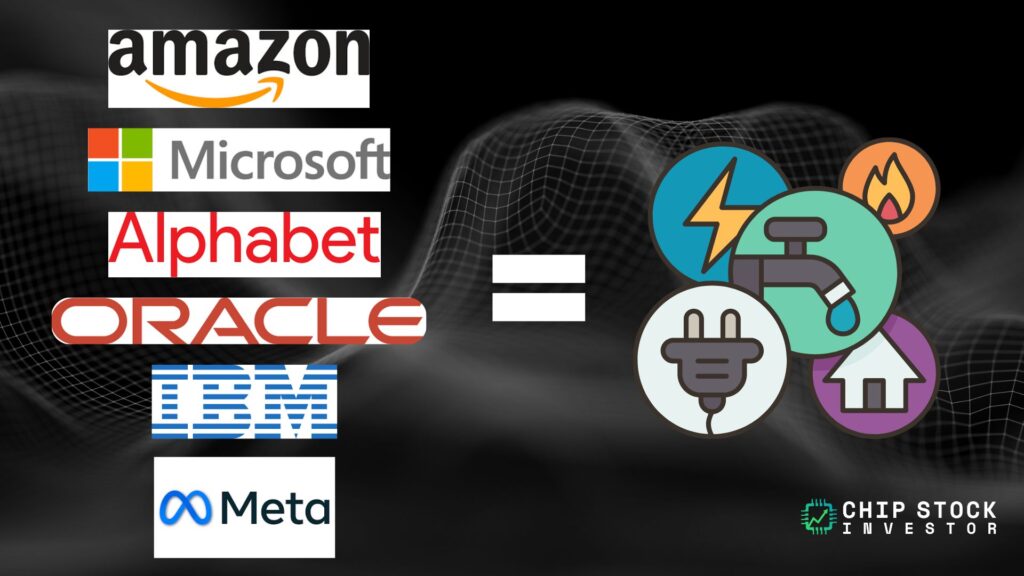
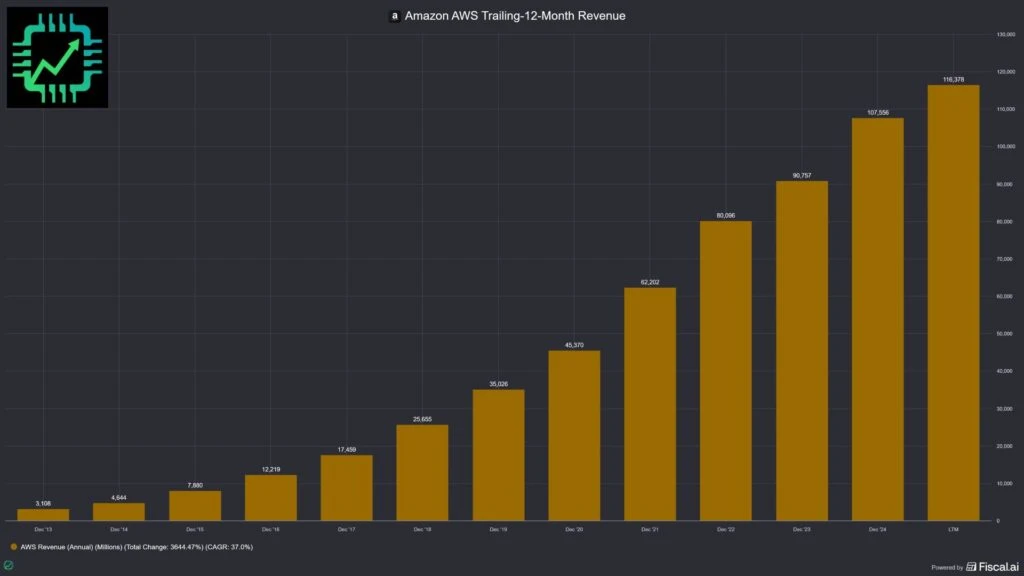
Will the AWS problem become an AMZN stock problem?
Yes, it could.
Long-time Amazon investors have known for years that it was quietly AWS paying the bills, not the e-commerce side of Amazon. Even today amidst Amazon’s broad cost-cutting initiatives — including layoffs, return to office mandates, capital expenditure (CapEx) right-sizing for its warehouses and order fulfillments — and growth in higher-profit-margin initiatives like digital ads, AWS is still doing the heavy lifting. Despite hauling in just $116 billion of the $670 billion trailing-12-month revenue total for Amazon (17% of sales), AWS generated $42.8 billion of Amazon’s $76.2 billion EBIT (earnings before interest and tax) total.
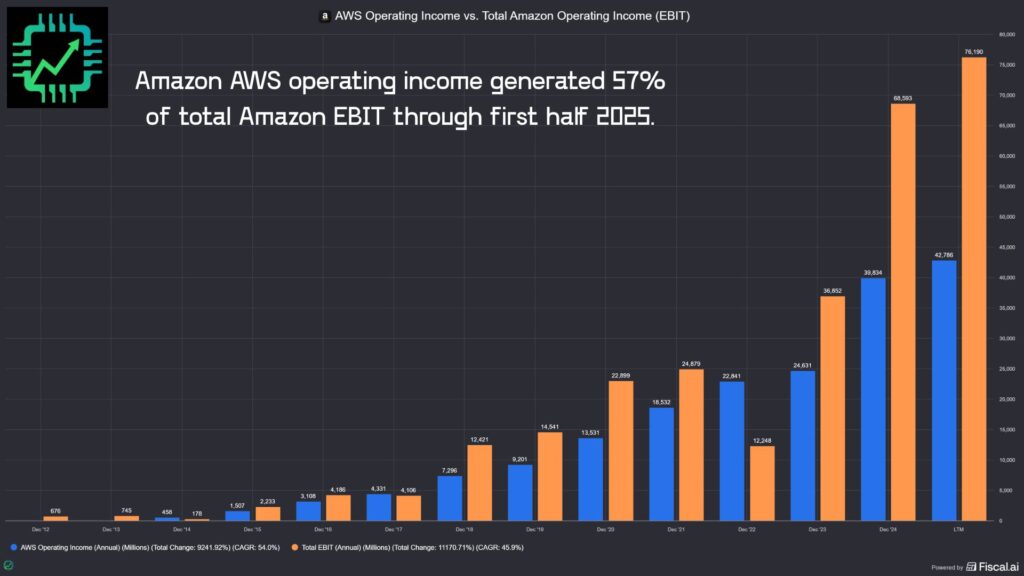
With a big infrastructure outage like on October 20, the follow-on effects for AWS customers can be severe: Customer complaints fielded and answered, lost revenue, and so on. AWS may have to issue customer credits, which means lost revenue and profit for itself as well. Just ask CrowdStrike (CRWD) how causing a widespread IT outage can have lingering financial after-effects.
Also ask CrowdStrike how a company can bridge over IT outage mayhem and keep its financials, and thus stock price, moving up-and-to-the-right.
What other database tools can be invested in?
The good news is, it’s 2025, and there are options for the websites and web-based apps. Besides other big tech hyperscalers, investors have choices too when betting on that potential “next big thing” in internet development, besides AWS and its toolset including DynamoDB.
- Cloudflare (NET): Cloudflare Pages and Workers have extended the static web page hosting Cloudflare started with, and can now host dynamic web pages and apps.
- Snowflake (SNOW): Especially for internal-use apps that utilize company data hosted in Snowflake’s Data Cloud, Snowflake enables apps built using open-source Streamlit, and then distribution on Snowflake Native Apps.
- MongoDB (MDB): MongoDB Atlas is a hosted database service addressing all sorts of data types, used for developing dynamic applications including AI.
Of course, each of these software companies have already had a pretty epic 2025, and investors could rightfully be concerned with valuations being stretched a little thin for each company’s current financial reality.
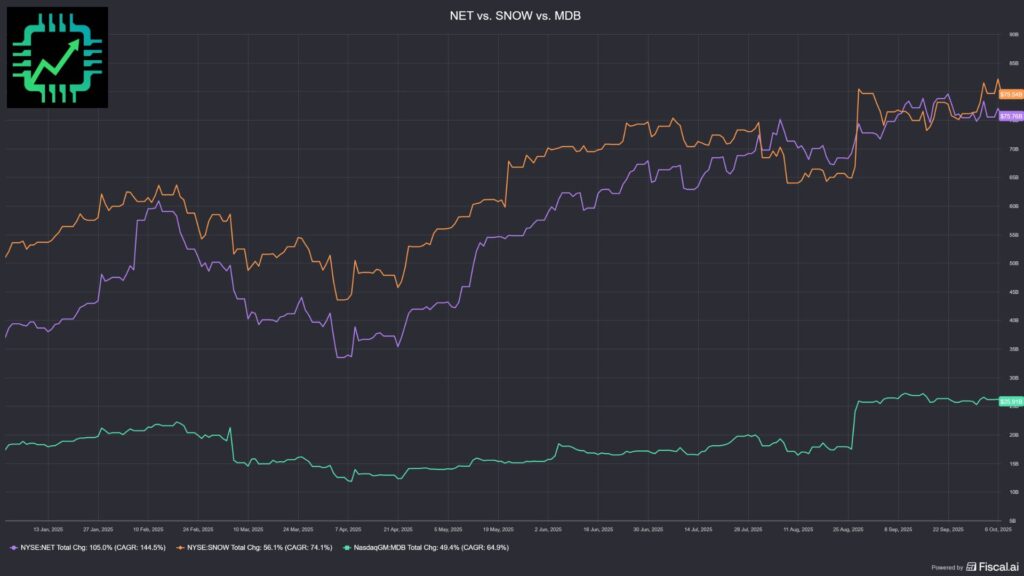
And so, if you already have money parked in AMZN stock, but want something a bit more diversified, there’s always our old tech standby the Vanguard IT Index Fund (VGT), or something similar for those outside of the U.S. (VGT is based on the MSCI US IMI Information Technology 25/50 Index, which tracks large-, mid-, and small-cap U.S. tech stocks, including the three mentioned above). VGT has had a pretty good few years, better than AMZN, with its several-hundred mid- and small-cap holdings.
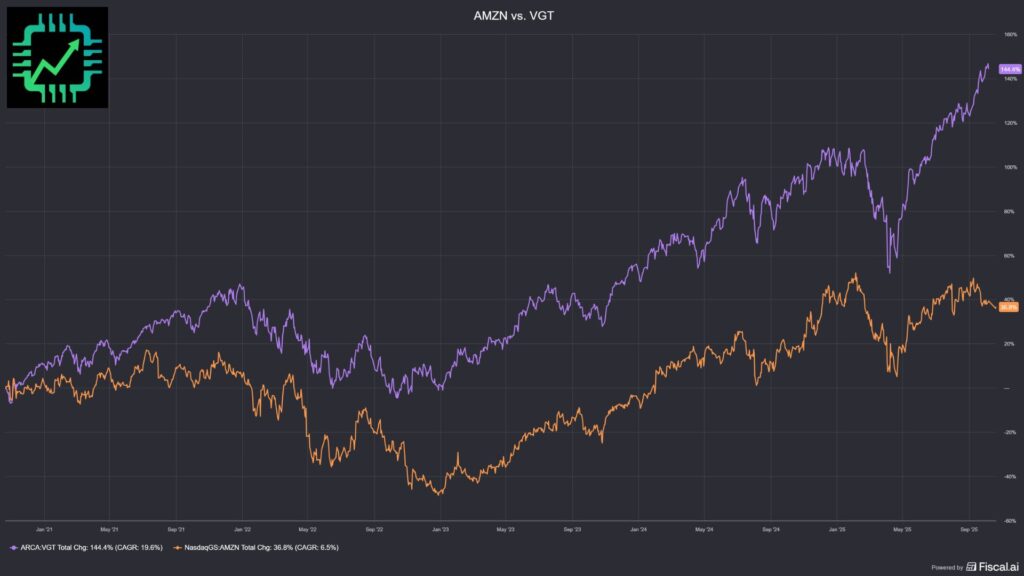
Or, there’s always just AMZN stock too, which could certainly quickly move on from the AWS outage. Perhaps the company is still due for a bounce back following the bear market of 2022-23.
Join us over on Semi Insider where we discuss all sorts of investable software companies for more actionable ideas!

